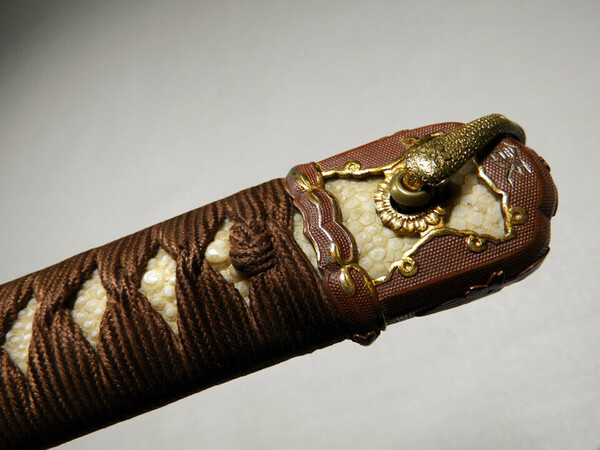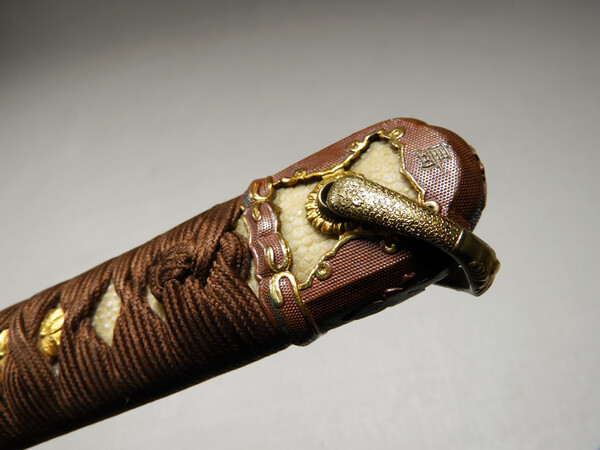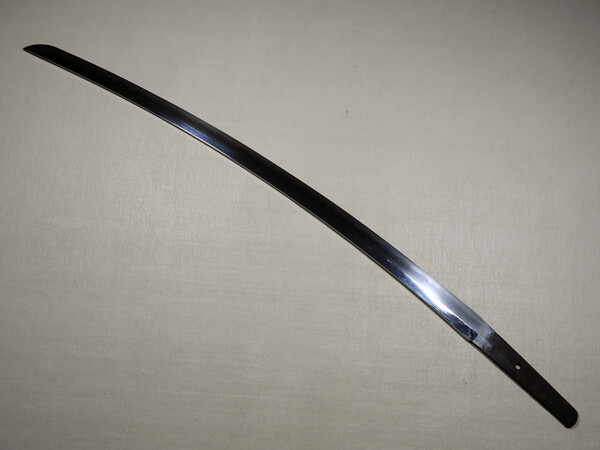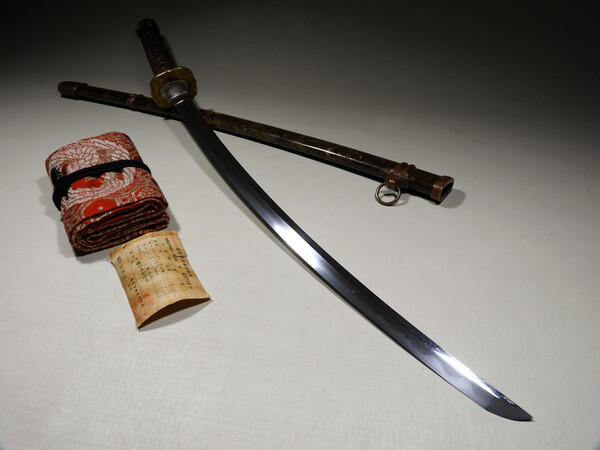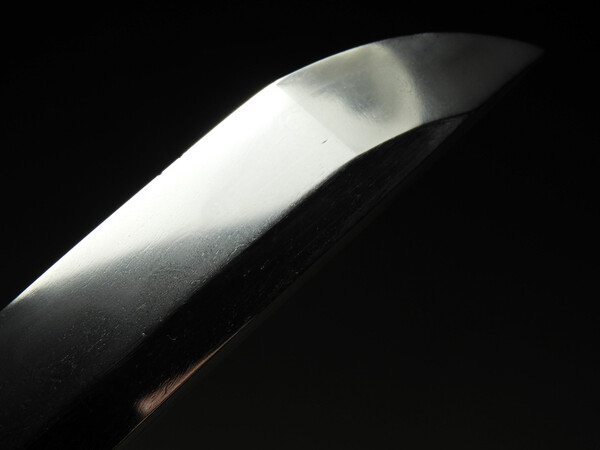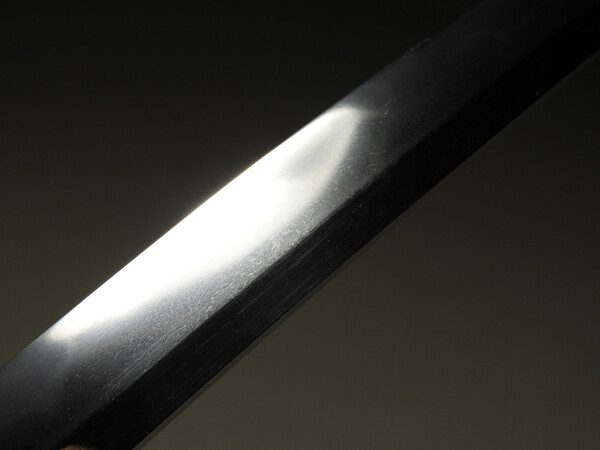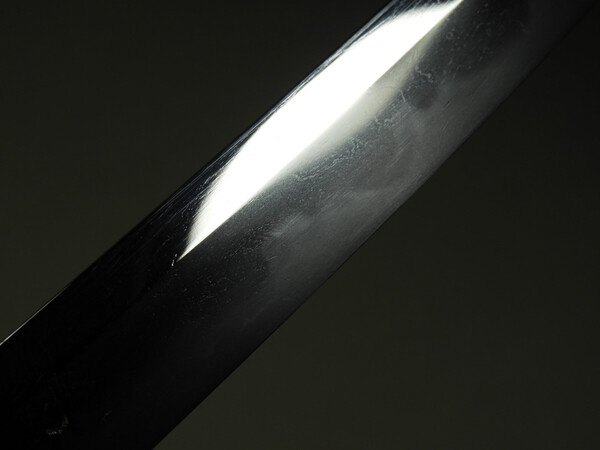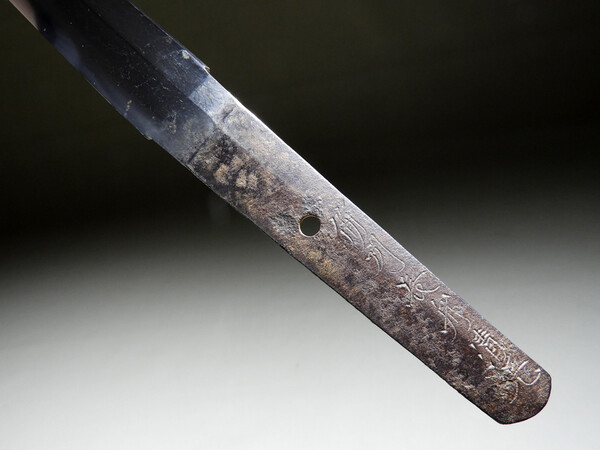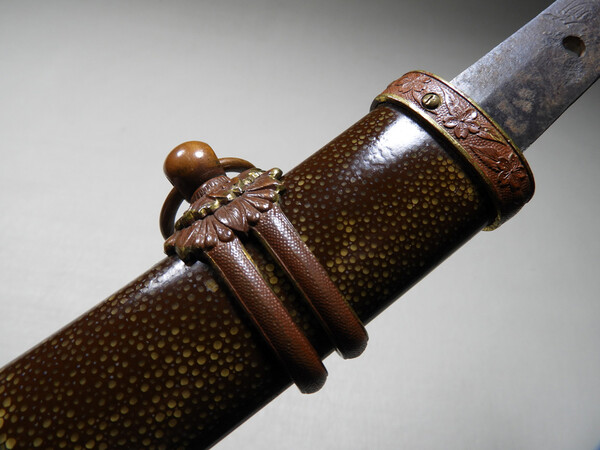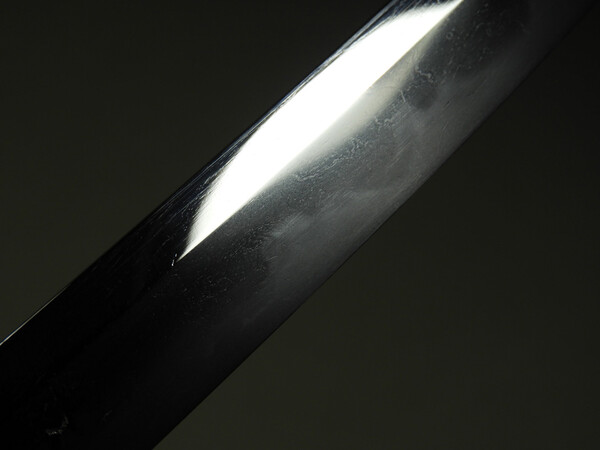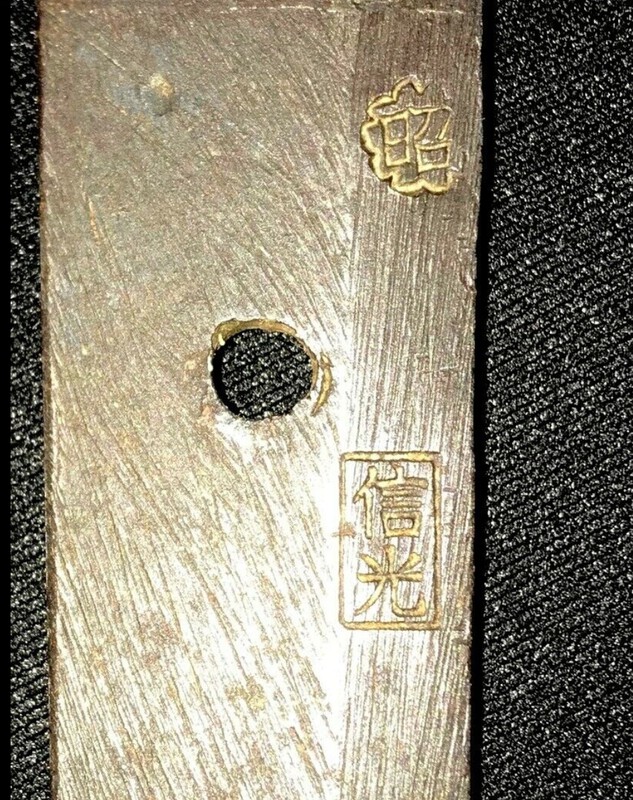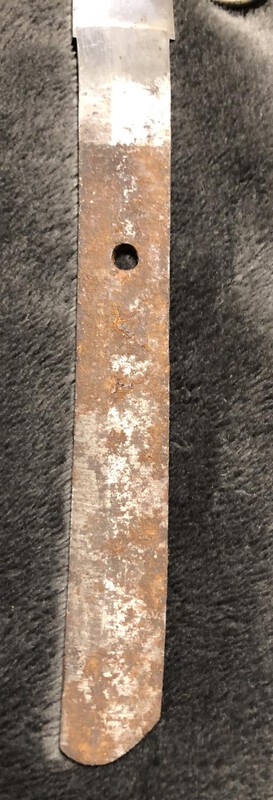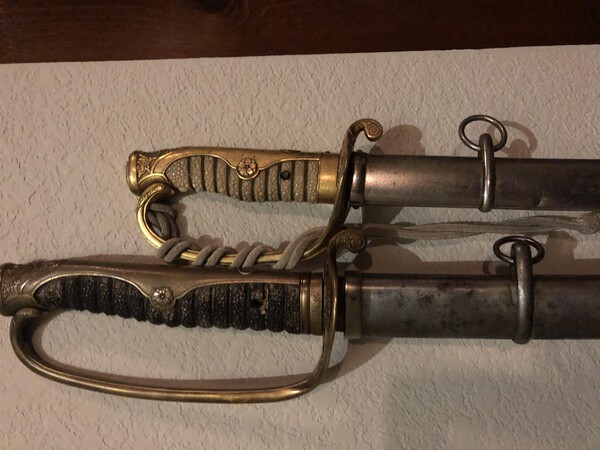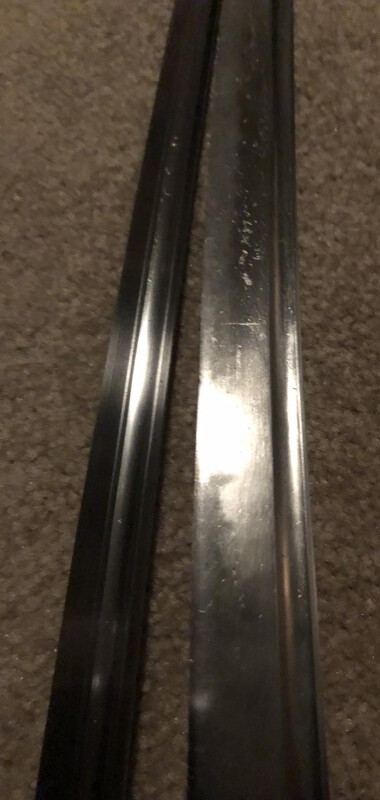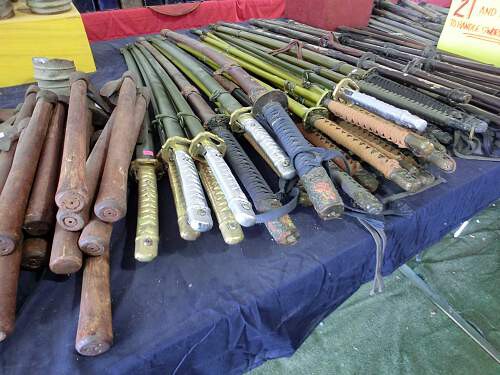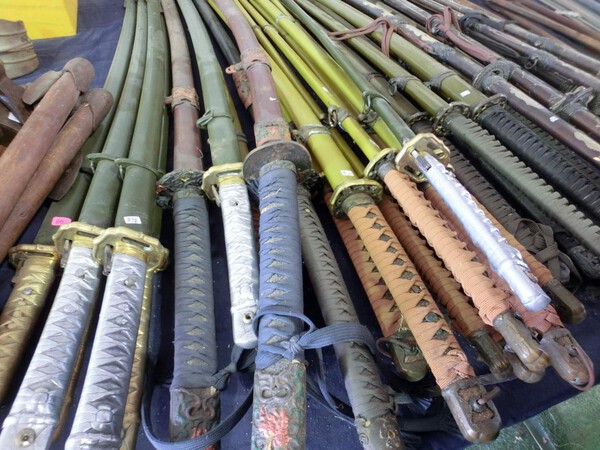-
Posts
13,004 -
Joined
-
Last visited
-
Days Won
155
Content Type
Profiles
Forums
Events
Store
Downloads
Gallery
Everything posted by Bruce Pennington
-
Well said Paul and JP! In this, I say: I collect........ therefore I am.
-

Yamakami Akihisa Late War (Type 3) Gunto
Bruce Pennington replied to MacTheWhopper's topic in Military Swords of Japan
You can read a good deal about them here: http://www.warrelics.eu/forum/Japanese-militaria/deflating-another-myth-type-3-army-officer-s-sword-expanded-version-584796/ And about RJT blades: http://www.militaria.co.za/nmb/topic/23887-informations-about-the-rjt/?hl=star -

Yamakami Akihisa Late War (Type 3) Gunto
Bruce Pennington replied to MacTheWhopper's topic in Military Swords of Japan
The second chuso (scabbard locking clip) is missing, but originally, this was a double-chuso set of fittings, which we have come to exptect on star-stamped gendaito in Rinji Seishiki (Contingency) mounts. Kenny, For the record: Japanese Officer gunto (gunto - "Army sword"), Contingency model of the Type 98 officer sword. Sometimes called a "late-war" model, or "Type 3", but they were originally ordered up by the Army in 1938. Yet, they are almost always seen with blades made in the '40s. Yours was made in December of 1942. The blade is what we call a gendaito, or nihonto, which means traditionally made. The star stamp attests that the smith made it in accordance with strict Army regulations/specifications, with Japanese steel (tamahagane), and using tradional methods. The "matsu" stamp and serial number on the tang (nakago) are often seen on Akihisa blades. It's not really known the reason, whether a tracking system for the smith or for army contract. -

Interesting eBay listing 'KIYOMITSU'
Bruce Pennington replied to m4l700's topic in Military Swords of Japan
David, I put this on the Translation Assistance forum. Raymond Singer says the kanji are: "I believe it is 飯島 - Iijima" Makes sense, as they made lots of Type 95s and their koshirae. -

Help, Please: Kiyumitsu Kabutogane Kanji
Bruce Pennington replied to Bruce Pennington's topic in Translation Assistance
Iijima would makes sense. They were a big maker of Type 95s and their koshirae. -
I'm not trying to be dense, here, but you're saying the maker's shop name is: 東京尚兵館 Tōkyō Shōhei-kan Tokyo "Refined Soldier Hall" Refined Soldier Hall???
-
Appriciate some help with two kanji on the kabutogane of a gunto with a Kiyumitsu blade. Thanks! Comes from a fleabay sale, shipping from Japan. Here are some of the blade pics.
-

Interesting eBay listing 'KIYOMITSU'
Bruce Pennington replied to m4l700's topic in Military Swords of Japan
-
Sorry Thomas, I don't see it on that page you've linked.
-
Thomas, Does the company name translate to anything usable in English?
-
That's a beauty Brandon! I have one in the Stamps Doc, but yours is in better shape. I'm putting yours there, if you don't mind. "Shoheikan Gunso Kabushiki Gaisha" (don't know what that means, but it's the koshirae shop emblem)
-

New Photography
Bruce Pennington replied to Ray Singer's topic in General Nihonto Related Discussion
Ray, who is the person depicted on the blade in post #39? -

Piles of fake swords!
Bruce Pennington replied to Bruce Pennington's topic in Military Swords of Japan
I've seen some Chinese items, mostly NCO leather tassels, advertised as reproductions. I want to say I've even seen gunto sold as reproductions. They usually start with "hand-made". It's the guys in the States that have gotten them and are re-selling as legit that are really causing most of the problems. -
Brian, by "owner" do you mean the one in 1941 or 1995? This stuff drives me nuts when the work is so good, you don't know if it was period or post-war. It's like the gold-painted gunto and the green-blotchy saya. My gut feel is that it's just all post-war. If this guy (1995) was good enough to remove and replace the ito and curve the badges just right, then it could all be post-war mod. There are some really crafty guys out and about. But then, John's idea of a commemorative gift within a unit has always teased my mind. Modern day military do such things. I would love to find out if WWII military did so as well. Another mystery. But pretty garish, so I'd lean toward all of it being the 1995 guy. At any rate - it's a number I didn't have! Thanks Stephen for an interesting gunto discussion!
-

Civilian Sword Questions by Kojima Yoshimichi
Bruce Pennington replied to MacTheWhopper's topic in Military Swords of Japan
I’d say price is normal too. I don’t follow the smiths so can’t help there. -
-
John,I don't think it is. There is orange active rust, but doesn't seem to have any of the dark old stuff, so likely in that 40 yr window when they were making these.
-

High Quality Gunto Field Repair
Bruce Pennington replied to Bruce Pennington's topic in Military Swords of Japan
Rather than start a new thread, I thought this one would work to continue a discussion of items that might be examples of field repair. I now have 2 gunto - one a Type 95, and the other a kyugunto - with large brass/copper "after-market" fittings. I got the Type 95 first, and assumed it was a Bubba-fix to a loose tsuka. But after seeing this habaki extension created for this kyu, I'm starting to wonder. Both the 95 and the kyu were missing seppa, and it appears these "fixes" were made to tighten the tsuka of them both. From the 95 - I removed the fat seppa and replaced it with correct ones. I don't have original pics of how it looked on the blades: The kyu. It's missing the chuso as well as seppa. And the width of the habki addition is too wide to fit into the saya opening: I suppose it's quite possible they were both post-war made by crafty buys to tighten the tsuka. But I wonder if they could have been field repairs. Thoughts? Any more examples out there? -
As a newbie to the Kyu, I thought it would be nice to have a thread where Kyu collectors could compare notes, ask questions, and show their stuff. I got one at auction, that I intend to sell, but I was surprised at it's size. My first one is single-handed, but still a D-ring. This second one is a beast! Double-handed in the tsuka and the blade is twice the width of my first one! I didn't realize there was such variation in sizes.
-
This is at a gem show in Tucson AZ : http://www.warrelics.eu/forum/Japanese-militaria/piles-fake-swords-758091/
-
That's actually quite low for the Japanese sites.
-
You continue to amaze, Thomas! Where do you find this stuff?
-
Fascinating bit of history at Warrelics about terms from Nick Komiya, responding to Thomas' digging up army kanji for "saya": https://www.amazon.com/Japanese-Military-Civil-Swords-Dirks/dp/1574270621 "There is actually a small story of its own attached to the evolution of the Japanese language used by the army. In a nutshell, senior officers of the early IJA were ex-samurai, mainly from the southern island of Kyushu, and for the Samurai, learning classical Chinese was obligatory as Latin was for European intellectuals of the time. On the other hand, the ex-farmers that got inducted into the new army, though extremely literate by international standards of those times (In the Kyushu region, roughly 70% of the general population was literate). However, between those educated in classical Chinese and those with normal daily farm-hand literacy, there was naturally a world of disparity in Kanji literacy. Thus by 1940, there were too many complicated weapon names that simple soldiers could no longer keep up with. So the army finally decided to simplify its naming practices. They did this by restricting the weapons vocabulary to a maximum of 1,235 Kanji. Of this number, 959 were classified as class 1 kanji, obligatory for the most basic weapon ("A class weapons" 甲兵器 ) names. The Class 1 range was picked from Kanji you should know by the end of the 4th year in elementary school with a sprinkling of some simple 5th and 6th-grader kanji. There were further 276 Class 2 Kanjis taken from elementary school graduate level and applied to weapons used by higher qualified personnel ("B class weapons"乙兵器). Regarding the naming of the scabbard for the Type 95 sword as 革+室 as seen in the 1938 document. It may very likely be an army invented kanji (Ate-ji). Back in 1887, the army called the leather sheaths for field engineer tools Kaku-Shitsu, written 革室, literally meaning “leather chamber”. This word was used for 20 years until they changed the naming of the case to a bag, Fukuro 袋 in 1907. Arisaka of rifle design fame had a role in coining unique army naming practices that defied conventional kanji readings and he happened to be he chief of army weapons development, a position with enough clout to screw up army lingo beyond recognition to educated laymen. See here for details on that story. These two kanji seem to have been joined together later at the hip to mean Saya for the NCO swords. Thus 革+室 was already in use from the Type 32 swords. Officer swords on the other hand, had been using the more traditional Kanji for Saya 鞘 at least since the 1912 model officer swords. This difference in the kanji used for scabbard got carried over into the Type 94, 95 and 98 swords. Thus until weapon name kanji restrictions came into effect in Feb. 1940, officer and NCO swords did not share the same kanji for what would have been read Saya, whichever way you wrote it. The 1940 army lingo simplification worked also as a social equalizer in this respect, as both Kanji got dropped from the permissible kanji list. Saya 鞘 for officer swords continued to be used, but it became mandatory to add Furigana, showing how to read it. In the case of Type 95 swords, they simply ceased to use the army-coined kanji for Saya and switched to Hiragana, as seen in the manual shown from 1944 in post 14."
-
Or rather as gimei.



